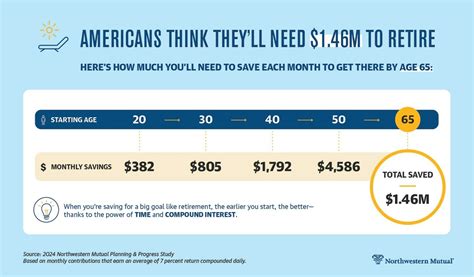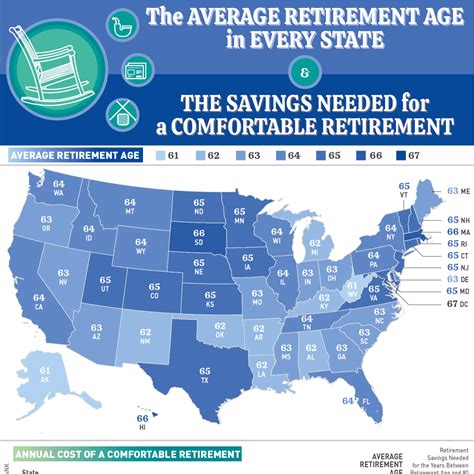
Tesla is aggressively deploying discounts and incentives to bolster sales amid a noticeable slowdown in demand, signaling a potential shift in strategy after years of prioritizing profit margins. The move comes as the electric vehicle (EV) giant faces increased competition and evolving market dynamics.
Tesla, grappling with a sales slowdown, is doubling down on incentives and price cuts in what appears to be an “all-in” push to maintain its market share. Faced with growing competition and a changing economic landscape, the company is reversing its long-held strategy of prioritizing high profit margins over volume, as evidenced by recent moves in both the United States and China.
The company’s actions include offering attractive financing options, price reductions on existing inventory, and enhanced incentives, all aimed at stimulating demand. These measures represent a significant departure from Tesla’s previous stance, where demand often outstripped supply, allowing the automaker to command premium prices.
According to Yahoo Finance, “Tesla is attempting to backtrack on incentives and discounts as demand softens.” This shift in strategy underscores the challenges Tesla is currently encountering in maintaining its growth trajectory in an increasingly competitive EV market. The incentives being offered are designed to entice potential buyers who may have been hesitant due to price or financing concerns.
One of the most notable changes is the introduction of more appealing financing options. Tesla is now offering lower interest rates and more flexible payment terms, making its vehicles more accessible to a wider range of consumers. This move is particularly important in the current economic climate, where rising interest rates have made auto loans more expensive, potentially deterring potential buyers.
In addition to financing incentives, Tesla has also implemented price reductions on existing inventory. These discounts apply to various models and trims, providing immediate savings for customers willing to purchase vehicles already in stock. This strategy not only helps clear out existing inventory but also attracts price-sensitive buyers who might be considering competing EV brands.
The incentives are not limited to the United States. In China, Tesla is also offering discounts and incentives to stimulate demand in the world’s largest auto market. This reflects the global nature of the challenges Tesla faces and the need for a comprehensive strategy to address them. The Chinese market is particularly competitive, with a growing number of domestic EV manufacturers vying for market share.
“Tesla’s about-face on incentives and discounts underscores how much the competitive environment has changed,” the Yahoo Finance article notes. This change is driven by several factors, including the entry of established automakers into the EV market, the emergence of new EV startups, and the increasing availability of government incentives for EV purchases.
The decision to prioritize volume over profit margins represents a calculated risk for Tesla. While the company has historically enjoyed high profit margins compared to its competitors, the current market dynamics require a more aggressive approach to maintain its leadership position. By lowering prices and offering incentives, Tesla hopes to attract new customers and retain existing ones, even if it means sacrificing some profitability in the short term.
However, this strategy is not without its potential drawbacks. Lowering prices can erode profit margins and potentially impact the company’s financial performance. It can also create challenges in maintaining the brand’s premium image and value proposition. Moreover, aggressive discounting can spark a price war with competitors, further squeezing profit margins across the industry.
Tesla’s “all-in” push is a clear indication that the EV market is entering a new phase of maturity and competition. As more automakers enter the fray and consumer choice expands, Tesla must adapt its strategies to remain competitive. The company’s success in navigating these challenges will depend on its ability to balance growth, profitability, and brand image in a rapidly evolving market.
The move to offer discounts and incentives also reflects a broader trend in the automotive industry, where manufacturers are increasingly relying on incentives to boost sales in a slowing economy. Rising interest rates, inflation, and economic uncertainty have all contributed to a decline in consumer confidence and a decrease in demand for new vehicles.
Tesla’s actions are being closely watched by investors and analysts, who are trying to gauge the long-term implications of the company’s shift in strategy. Some analysts believe that the move is a necessary response to changing market conditions and that it will ultimately benefit Tesla in the long run. Others are more cautious, warning that it could erode profit margins and damage the company’s brand.
The effectiveness of Tesla’s “all-in” push will depend on several factors, including the strength of consumer demand, the competitive response from other automakers, and the overall economic climate. If the incentives succeed in stimulating demand and maintaining market share, Tesla may be able to weather the current challenges and continue its growth trajectory. However, if the incentives fail to generate sufficient sales, the company may need to re-evaluate its strategy.
The company’s Q2 2024 delivery numbers will be crucial in determining the success of the strategy, according to many industry experts. These numbers will provide a clear indication of whether the discounts and incentives are having the desired effect on sales. If deliveries fall short of expectations, it could signal more significant challenges ahead for Tesla.
Tesla’s long-term success will also depend on its ability to continue innovating and developing new products that appeal to consumers. The company has a strong track record of innovation, but it faces increasing competition from other automakers who are also investing heavily in EV technology.
In addition to discounts and incentives, Tesla is also focusing on other strategies to boost sales, such as expanding its Supercharger network, improving its customer service, and offering new features and software updates for its vehicles. These efforts are all aimed at enhancing the overall ownership experience and attracting new customers to the brand.
Tesla’s shift in strategy highlights the dynamic and ever-changing nature of the EV market. As the market matures and competition intensifies, automakers must adapt their strategies to remain competitive and meet the evolving needs of consumers. Tesla’s “all-in” push is a bold move that could have significant implications for the company and the entire EV industry.
The price cuts and incentives are largely viewed as a response to weakening demand. Tesla has maintained high profit margins compared to other automakers, but the company now appears willing to sacrifice some of those profits to keep sales moving. This is likely driven by several factors, including increased competition from other EV makers, a softening economy, and rising interest rates.
One of the key challenges for Tesla is the increasing number of competitors in the EV market. Established automakers like General Motors, Ford, and Volkswagen are all investing heavily in electric vehicles and launching new models that compete directly with Tesla’s offerings. In addition, a host of new EV startups are also entering the market, further increasing competition.
The softening economy and rising interest rates are also putting pressure on Tesla’s sales. As interest rates rise, it becomes more expensive for consumers to finance new car purchases, which can lead to a decrease in demand. In addition, economic uncertainty can make consumers more hesitant to make large purchases like cars.
Tesla’s decision to offer discounts and incentives is a clear sign that the company is taking these challenges seriously. By lowering prices and making its vehicles more affordable, Tesla hopes to attract new customers and maintain its market share. However, the company will need to carefully manage its profit margins to ensure that it can continue to invest in new products and technologies.
The incentives include a variety of different offers, such as price reductions, low-interest financing, and free Supercharging. The specific incentives vary depending on the model and location, but they are all designed to make Tesla vehicles more attractive to potential buyers.
One of the most significant incentives is the price reduction on the Model 3 and Model Y, which are Tesla’s most popular models. These price cuts have made Tesla vehicles more competitive with other EVs and gasoline-powered cars.
In addition to price cuts, Tesla is also offering low-interest financing on its vehicles. This makes it more affordable for consumers to finance a Tesla purchase and can lower their monthly payments.
Tesla is also offering free Supercharging to some customers. This allows them to charge their vehicles for free at Tesla’s Supercharger stations, which can save them a significant amount of money on fuel costs.
The incentives have been well-received by consumers, and they appear to be having a positive impact on sales. Tesla’s sales have increased in recent months, and the company is on track to deliver a record number of vehicles in 2024.
However, it remains to be seen whether Tesla can sustain these sales gains in the long term. The EV market is becoming increasingly competitive, and Tesla will need to continue innovating and offering attractive incentives to stay ahead of the competition.
One of the key challenges for Tesla is to maintain its high profit margins while offering competitive prices. The company has historically been able to charge premium prices for its vehicles due to its strong brand and innovative technology. However, as the EV market becomes more crowded, Tesla may need to lower its prices to compete with other automakers.
This could put pressure on Tesla’s profit margins, and the company will need to find ways to reduce costs and improve efficiency to maintain its profitability.
Another challenge for Tesla is to manage its production capacity. The company has struggled to keep up with demand in the past, and it will need to continue to invest in new factories and production lines to meet the growing demand for its vehicles.
Tesla’s “all-in” push is a bold move that could have significant implications for the company and the entire EV industry. If the incentives succeed in stimulating demand and maintaining market share, Tesla may be able to weather the current challenges and continue its growth trajectory. However, if the incentives fail to generate sufficient sales, the company may need to re-evaluate its strategy.
The company’s stock price has reacted to the news, showing volatility as investors weigh the potential benefits of increased sales against the risks of reduced profit margins. Some analysts remain optimistic about Tesla’s long-term prospects, citing the company’s strong brand, innovative technology, and expanding Supercharger network. Others are more cautious, pointing to the increasing competition and the potential for a prolonged economic slowdown.
The success of Tesla’s strategy will depend on its ability to execute effectively and adapt to changing market conditions. The company will need to carefully manage its production capacity, control its costs, and continue to innovate to maintain its competitive edge.
The latest move by Tesla underscores the challenges and opportunities facing the EV industry as a whole. As the market continues to grow and evolve, automakers will need to be agile and adaptable to succeed. Tesla’s “all-in” push is a sign that the company is willing to take bold steps to maintain its leadership position and navigate the evolving landscape of the EV market.
Frequently Asked Questions (FAQ)
-
Why is Tesla offering discounts and incentives now?
Tesla is offering discounts and incentives due to a softening in demand for its vehicles, coupled with increased competition from other electric vehicle manufacturers. According to the Yahoo Finance article, “Tesla is attempting to backtrack on incentives and discounts as demand softens,” indicating a strategic shift to maintain sales volume in a more competitive market. This represents a reversal from Tesla’s previous approach of prioritizing high profit margins.
-
What types of incentives are Tesla offering?
Tesla is offering a range of incentives, including:
- Attractive Financing Options: Lower interest rates and more flexible payment terms to make vehicles more affordable.
- Price Reductions on Existing Inventory: Discounts on various models and trims already in stock.
- Incentives in China: Similar discounts and incentives to stimulate demand in the Chinese market.
These measures are designed to attract potential buyers who may have been hesitant due to price or financing concerns.
-
How does this strategy differ from Tesla’s previous approach?
Previously, Tesla prioritized high profit margins, often with demand exceeding supply. This allowed the company to command premium prices. The current strategy represents a shift toward prioritizing volume over profit margins, as Tesla now faces increased competition and a changing economic landscape. The move to offer discounts and incentives signals a recognition that the company needs to adapt its approach to maintain its market share.
-
What are the potential risks and benefits of this strategy for Tesla?
Potential Benefits:
- Increased Sales Volume: Attracting new customers and retaining existing ones by making vehicles more affordable.
- Maintaining Market Share: Remaining competitive in an increasingly crowded EV market.
- Clearing Existing Inventory: Reducing the backlog of vehicles in stock.
Potential Risks:
- Erosion of Profit Margins: Lowering prices can reduce profitability.
- Damage to Brand Image: Aggressive discounting can potentially impact the brand’s premium image.
- Price Wars: Sparking a price war with competitors, further squeezing profit margins.
-
How will this strategy impact the EV market as a whole?
Tesla’s “all-in” push is likely to intensify competition in the EV market. Other automakers may feel pressure to respond with their own discounts and incentives, leading to a broader trend of price reductions and increased value for consumers. This could accelerate the adoption of electric vehicles by making them more accessible to a wider range of buyers. However, it could also put pressure on the profitability of EV manufacturers and lead to consolidation in the industry.
-
Is Tesla having demand problems globally?
Yes, Tesla is experiencing demand issues not only in the United States but also globally, including in China, which is the world’s largest auto market. The company is offering incentives and discounts in China as well, which suggests that softening demand is a widespread issue affecting Tesla’s sales performance across different regions.
-
What could be alternative reasons, besides “softening demands,” that Tesla is introducing incentives?
While softening demand is a significant factor, alternative reasons for Tesla introducing incentives could include:
-
Ramping up Production: Tesla may be trying to stimulate sales to match increased production capacity from new factories or production line improvements. This would help ensure that factories are running at full capacity, maximizing efficiency and lowering per-unit costs.
-
Clearing Inventory for New Models or Updates: Tesla could be preparing to release updated versions of existing models or introduce entirely new vehicles. Incentives on current models would clear out inventory to make way for the new offerings, preventing overlap and competition between old and new products.
-
Gaining Market Share: Even if overall demand is steady, Tesla may be aiming to capture a larger portion of the existing market share from competitors. Incentives could attract buyers who are considering other EV brands or even traditional gasoline-powered vehicles.
-
Macroeconomic Factors: Broad economic factors like inflation, rising interest rates, and economic uncertainty could be impacting consumer spending, making them more cautious about large purchases like vehicles. Tesla could be introducing incentives to counteract these effects and keep sales moving despite economic headwinds.
-
Seasonal Sales Patterns: Car sales often fluctuate seasonally, with certain times of the year being slower than others. Tesla may be using incentives to boost sales during traditionally slower periods and maintain consistent delivery numbers throughout the year.
-
Regulatory Compliance: In some regions, Tesla might need to meet certain sales targets to comply with local regulations related to electric vehicle adoption. Incentives could help the company achieve these targets and avoid penalties or other regulatory issues.
-
-
What impact do government incentives have on Tesla’s pricing strategy?
Government incentives play a crucial role in influencing Tesla’s pricing and incentive strategies. These incentives, which can take the form of tax credits, rebates, or subsidies, directly affect the affordability of electric vehicles for consumers.
Positive Impacts:
-
Increased Demand: Government incentives make EVs more attractive to potential buyers by reducing the overall cost of ownership. This increased demand allows Tesla to potentially maintain higher prices and reduce the need for aggressive discounting.
-
Market Expansion: Incentives help expand the market for EVs by making them accessible to a wider range of consumers, including those who might not otherwise be able to afford them. This broader market reach supports Tesla’s long-term growth and sales targets.
-
Competitiveness: Government support can help Tesla compete with traditional gasoline-powered vehicles, which often have lower upfront costs. By offsetting the higher initial price of EVs, incentives level the playing field and encourage consumers to switch to electric.
Strategic Responses:
-
Price Adjustments: Tesla often adjusts its pricing in response to changes in government incentives. For example, when a new incentive is introduced or an existing one expires, Tesla may lower or raise its prices accordingly to maintain a competitive position.
-
Strategic Timing: Tesla might time the release of new models or features to coincide with the availability of government incentives, maximizing the appeal of its vehicles to consumers.
-
Lobbying Efforts: Tesla actively engages in lobbying efforts to support the continuation and expansion of government incentives for EVs. The company recognizes the importance of these incentives in driving demand and supporting its business objectives.
- How does Tesla’s Supercharger network influence its pricing and sales strategy?
Tesla’s Supercharger network is a significant asset that influences its pricing and sales strategy in several ways:
Value Proposition:
-
Enhanced Ownership Experience: The Supercharger network provides Tesla owners with convenient and reliable access to fast charging, enhancing the overall ownership experience and making Tesla vehicles more attractive compared to EVs from other manufacturers that lack such a comprehensive charging infrastructure.
-
Competitive Advantage: The extensive Supercharger network gives Tesla a competitive advantage, as it addresses one of the primary concerns of potential EV buyers: range anxiety and the availability of charging stations.
-
Price Justification: Tesla can justify premium pricing, in part, due to the added value of the Supercharger network. Customers are willing to pay more for a Tesla because they are also gaining access to a proprietary charging ecosystem.
Sales Strategy:
-
Incentives and Promotions: Tesla sometimes offers free Supercharging credits or unlimited Supercharging as part of its sales promotions. This can be a powerful incentive for potential buyers, especially those who frequently travel long distances.
-
Showcasing Technology: Tesla uses its Supercharger network to showcase its technology and innovation. The stations are equipped with advanced charging equipment and are strategically located to provide convenient and accessible charging options.
-
Brand Loyalty: The Supercharger network helps foster brand loyalty among Tesla owners. By providing a seamless and reliable charging experience, Tesla encourages customers to remain within the Tesla ecosystem and purchase future vehicles from the brand.
Pricing Strategy:
-
Cost Recovery: Tesla factors the cost of building and maintaining the Supercharger network into its overall pricing strategy. The company may charge slightly higher prices for its vehicles to help offset the expenses associated with the network.
-
Usage-Based Pricing: Tesla has implemented usage-based pricing at its Supercharger stations, charging customers based on the amount of electricity they consume. This helps to manage demand and ensure that the network remains sustainable.
-
Bundled Services: Tesla sometimes bundles access to the Supercharger network with other services, such as premium connectivity or enhanced autopilot features. This can create additional revenue streams and further enhance the value proposition for Tesla owners.
- Given the increased competition, will Tesla’s “all-in” push affect the strategies of other EV manufacturers?
Yes, Tesla’s “all-in” push with discounts and incentives is likely to significantly affect the strategies of other EV manufacturers, prompting them to reassess their own approaches to pricing, marketing, and production.
Likely Effects:
-
Price Adjustments: Other EV manufacturers may feel compelled to lower their prices to remain competitive with Tesla. This could lead to a price war in the EV market, benefiting consumers but potentially squeezing profit margins for all manufacturers.
-
Increased Incentives: Companies might increase their own incentives, such as financing offers, rebates, and free charging, to attract buyers. This would create a more competitive landscape, where consumers have more options and greater purchasing power.
-
Marketing and Promotion: EV manufacturers will likely ramp up their marketing efforts to highlight the unique features and advantages of their vehicles. This could include emphasizing factors like range, performance, technology, and design.
-
Production Adjustments: Companies may need to adjust their production plans to align with changing demand. If Tesla’s incentives lead to a significant increase in sales, other manufacturers might need to increase their own production to meet the anticipated growth in the EV market.
-
Technological Innovation: The increased competition could spur further technological innovation, as manufacturers seek to differentiate their products and offer more advanced features. This could lead to improvements in battery technology, charging infrastructure, and autonomous driving capabilities.
-
Strategic Partnerships: EV manufacturers may explore strategic partnerships to share resources, reduce costs, and gain access to new technologies. This could involve collaborations with battery suppliers, charging network providers, or other automakers.
-
Focus on Value Proposition: Companies will likely focus on strengthening their value proposition by offering a combination of competitive pricing, attractive features, and excellent customer service. This will help them stand out in a crowded market and build brand loyalty.









